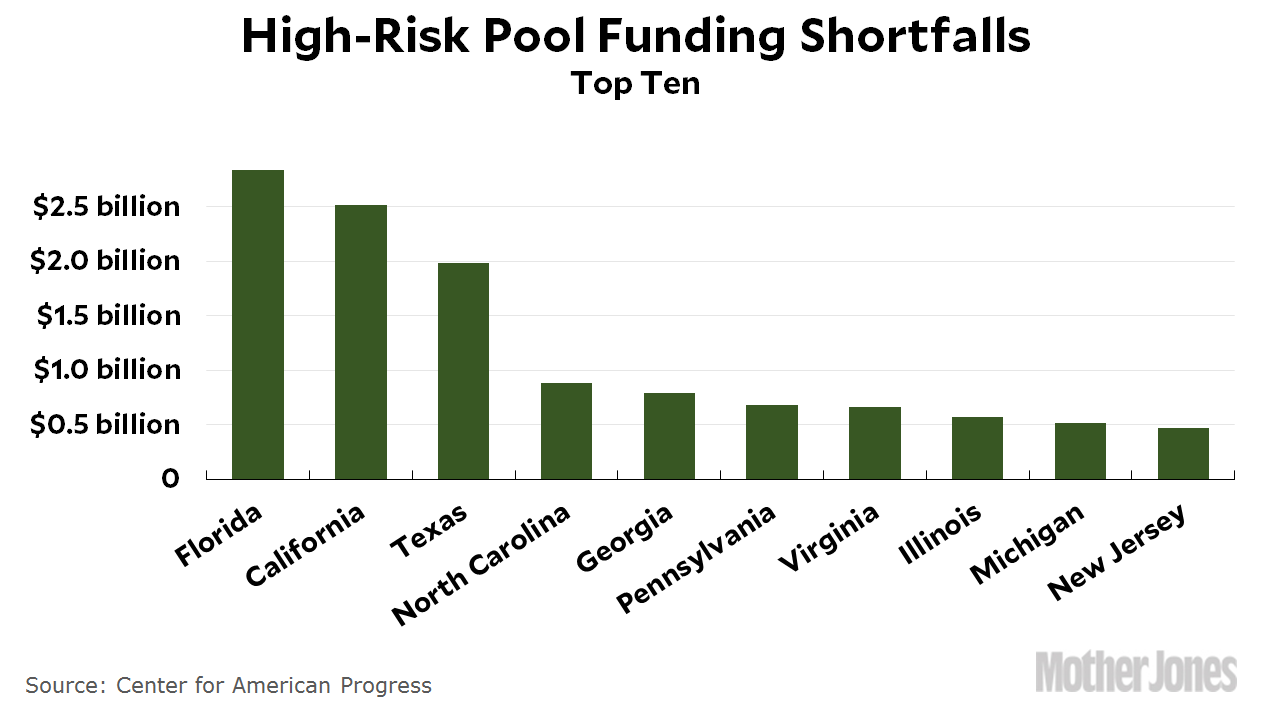Here’s the latest on TrumpCare:
Pre-existing Conditions. Matt Fiedler of the Brookings Institution notes that the MacArthur Amendment does more damage than it seems. At first glance, it eliminates community rating—the requirement that everyone pays the same premium even if they have a pre-existing condition—only for a limited time and only for people who have failed to maintain continuous coverage. But it’s worse than that:
Implementing a waiver like the one permitted by the MacArthur amendment would have the effect of completely unraveling community rating. Under the waiver, insurers would set two premium schedules: (1) a community-rated premium schedule for people who demonstrate continuous coverage; and (2) a medically underwritten premium schedule for people who do not demonstrate continuous coverage.
Healthy people would always prefer to pay an underwritten premium since it would allow them to avoid being pooled together with sicker people who have higher health care costs. Indeed, a healthy person opting into the underwritten pool could realize savings of hundreds or thousands of dollars per year.
Basically, there would be a price for healthy people and a price for sicker people. If you have a pre-existing condition, you’ll end up paying the higher price, and it might be very high indeed.
High-Risk Pools. TrumpCare imagines that people with pre-existing conditions could be segregated into high-risk pools run by the states. However, Emily Gee of CAP estimates that its funding for this is wildly inadequate:
Records from the Pre-Existing Condition Insurance Plan, the program that provided coverage to high-cost enrollees until the exchanges became available, show that average annual claims costs were $32,108 in 2012….For subsidies to cover 68 percent of enrollees’ premium costs, as ACA tax credits do now in the individual market exchanges, the government would have to put up $32.7 billion annually.
….The $13 billion per year that the AHCA provides for possible risk pool funding would leave a $20 billion shortfall annually. That gap is too big to be filled in by states, which would already be responsible for contributing to the stability fund.
Employer Plans. Obamacare eliminates annual and lifetime caps on coverage, even for employer plans. TrumpCare allows states to opt out of that:
This is a BOMBSHELL from @MattAFiedler: amendment would gut catastrophic protections FOR PEOPLE WITH EMPLOYER COVERAGE NATIONWIDE. RETWEET! pic.twitter.com/XM1iDyct02
— Topher Spiro (@TopherSpiro) May 1, 2017
Bottom line: As bad as TrumpCare was originally, and as much as you thought the MacArthur Amendment made it worse, it’s even worse than that. Hard to believe, isn’t it?














